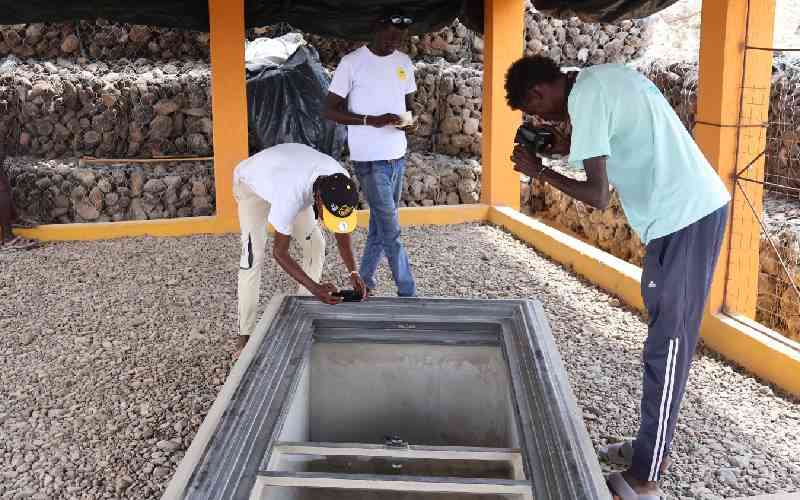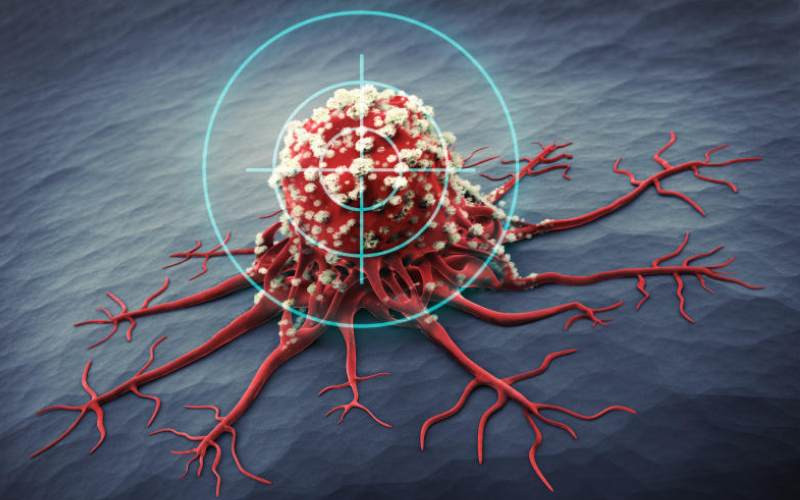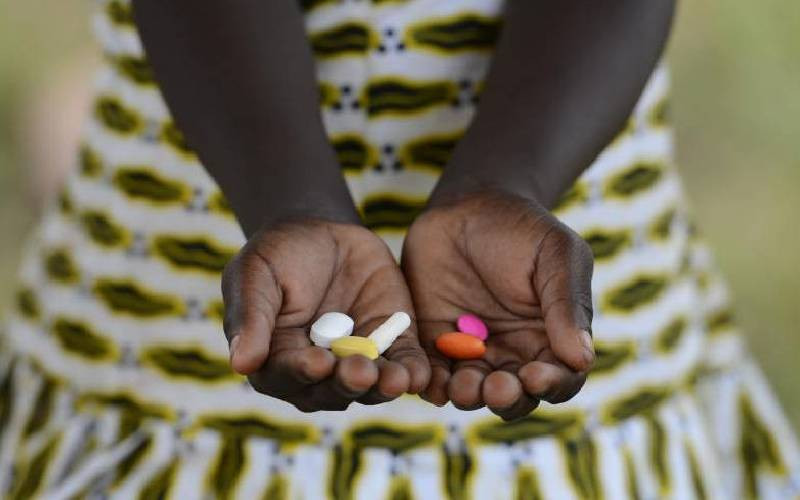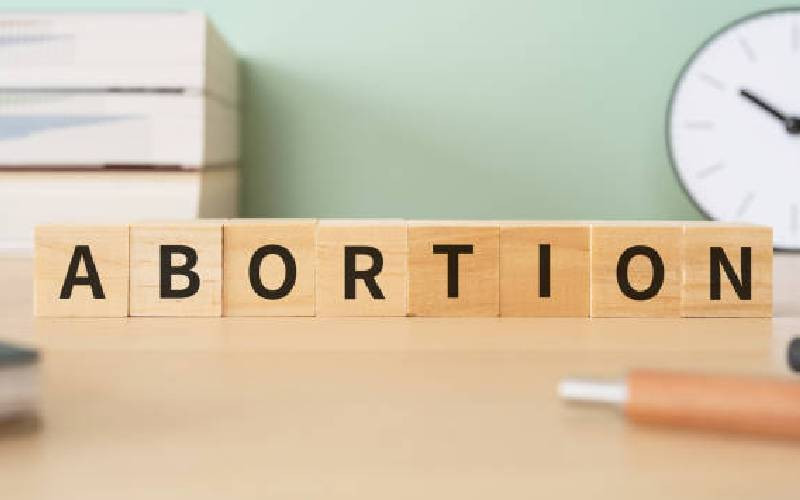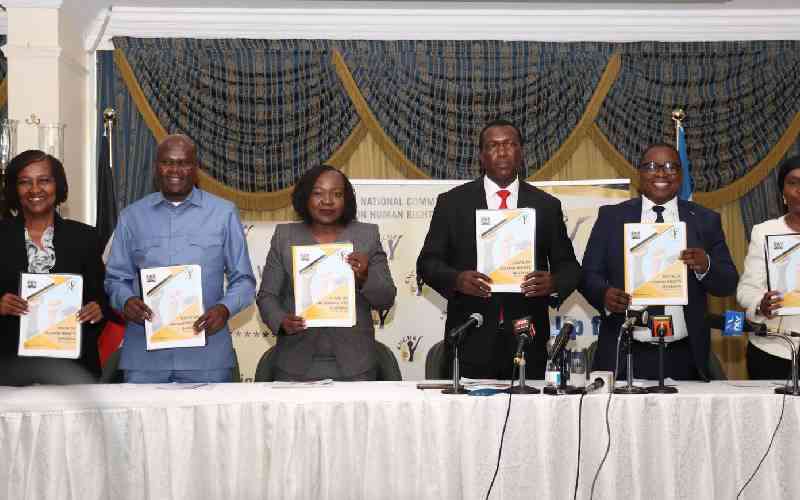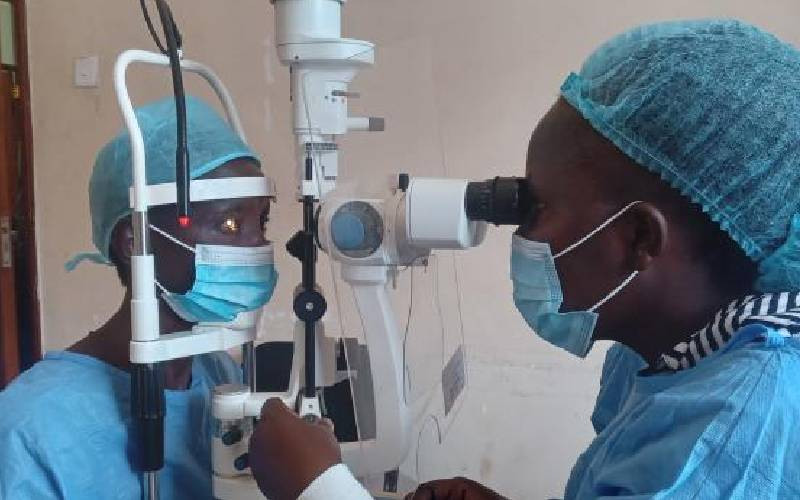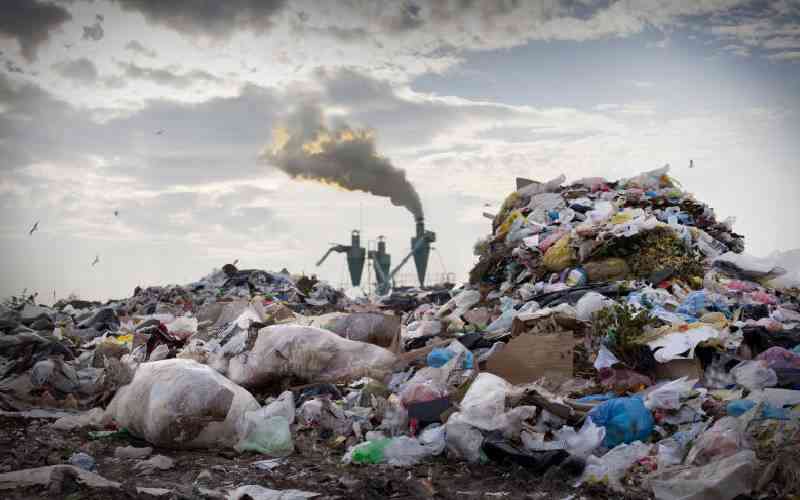
On a hot Monday morning in Nairobi's Huruma Estate, Julliet Nzilani is arranging her rubber merchandise of slippers made from old tires by the bus stage on the busy Juja Road.
As the buses rev their engines after stopping to pick up or drop off passengers, their exhausts gush out a huge black soot that buries Mueni and other businesspeople as it comes out from the diesel engines driving the old, rugged buses.
The 47-year-old mother of two says that she has worked at the Kwa Chief bus stage for the past eight years. Three years ago, she started developing breathing problems and has since been in and out of hospitals, with the last one in August where she was advised by a doctor at the Kenyatta University Hospital to always wear a mask while working at her business site.
Nzilani is only one of the victims among city dwellers affected by vehicular emissions that carry seriously damaging particles called particulate matter that vary in size and can be measured in micrograms. They are then classified as either PM 2.5 or PM10, with PM 2.5 being the finest that the human eye cannot see.
It causes serious damage to the human body as it lodges in the lungs and can enter the bloodstream if inhaled, causing upper respiratory illnesses and even death over time.
Vehicular emissions are one source of these pollutants, among several others within Nairobi city, both indoors and outdoors, including industrial emissions, burning waste, construction sites, and burning charcoal and kerosene stoves.
- Reducing air pollution speeding up global warming climate crisis
- Climate summit puts spotlight on debt trap behind green loans
- Battling dirty air in Nairobi's slums as toxic air chokes residents
Keep Reading
Dr. George Mwaniki, an air scientist and head of air quality for Africa at the World Resources Institute (WRI) says that vehicular emissions contribute a whopping 40 per cent of all air pollution sources in Nairobi.
"This is a huge, huge percentage of the total pollution we see in the city. Vehicles emit those breathable particles. But more importantly, they are a source of the gas phase emissions; what we call volatile organic carbons," he explains.
Dr. Mwaniki further says that these carbons are highly carcinogenic, "if you look around Nairobi and other urban areas, there's a rise in cancer cases - some of that can be contributable to vehicle emissions," he says.
However, Dr. Mwaniki warns that Nairobi's air quality has worsened 180 times since the country gained independence in 1963.
"We didn't have the equipment to monitor the air quality then, but we have visibility data from the airport, and based on that, we can say that the air quality is getting worse in the city. If we continue with that trajectory, maybe in the next 20 years we will increase that by 300 per cent," Dr. Mwaniki points out.
The World Health Organisation (WHO) guidelines state that annual average concentrations of PM2.5 should not exceed 5 g/m3. In contrast, 24-hour average exposures should not exceed 15 g/m3 more than three to four days per year. Data from the Nairobi Air Quality Index showed PM2.5 at 26.5 g/m3 and PM10 at 25.3 g/m3 on October 29th. PM2.5 was then more than 10 points more than the recommended average. About 99 per cent of the world's population breathes in air with pollution levels higher than the WHO-recommended safe limits. The highest levels of these are found in poor and developing countries, where most of the seven million annual deaths linked to air pollution are concentrated.
Gibson Ng'ang'a works as a waste picker at the Roysambu stage on Kamiti road, a job he has done for the past five years. He is always in a mask, a way of life he says he's known for almost all his life.
"Ever since I was born, I always had a chest problem and my mum would always give me a handkerchief to wear on my face since the wind gave me a congested chest and runny nose," says the 36-year-old father of two.
Ng'ang'a started working by the stage, picking and sorting waste before the Covid-19 pandemic, and says that he would always have a rug on covering his face to protect him from the dust and also the vehicle emissions from the adjacent stage. "The waste we pick is always full of dust, and the bus stage behind me is another source of bad air due to the black soot from the exhausts. I cannot stay without a mask," he says.
However, Ng'ang'a has never sought treatment for his condition and does not even know what it is, because he says that he feels it's part of his life and is in their family lineage.
"I have never gone to the hospital to get tested or treated because this is something I have lived with all my life. Even my own children also have the same problem, so I think I can only live with it and manage it," he says.
Even though research carried out by experts shows that air pollution affects respiratory systems, little research has been carried out to link it to women's reproductive health and how air pollution affects the different genders as the issue has always slipped under the experts' radar.
According to Purity Munyambu, the gender specialist at the World Resources Institute (WRI), even though men are predominantly exposed to particulate matter in the transport industry, women are even more disadvantaged because they are exposed to both indoor and outdoor air pollution because of their socio-economic situations.
"You find that in a city like Nairobi, women make a larger number of street vendors and do their businesses on the streets next to bus stages where public service vehicles run their engines throughout the day as they wait for passengers to board. When they go home in the evening, they are the ones cooking in the kitchen and therefore, are exposed to indoor sources of air pollution through fumes produced by cooking fuel," she explains.
A few kilometers into Huruma Estate slums lies a shanty with several crowded apartments with dark staircases that lead to 43-year-old Rose Mueni's single-room house, about four square metres on the fourth floor where she lives with her children.
For the single mother of six children, this is her second home after their first one was swept away by floods along the Mathare River a few months ago. In her first house, she lost all her belongings including an LPG gas cylinder. Now, they have to use a kerosene stove and sometimes a charcoal stove for cooking.
Her firstborn daughter, Olive is disabled and cannot move outside to breathe cleaner, fresher air, meaning she inhales all the fumes coming from the cooking inside their house. She has developed a respiratory disease that leaves her coughing all the time.
"Since she cannot move like the other children and bask outside for fresh air, she takes in a lot of the fumes from the cooking inside here and when I leave to go out to look for food, I have to leave her inside the house because it's risky, she can crawl away and get into harm's way," Mueni explains. Most of the time, Mueni also carries her daughter to the mosque where they beg for money to buy food and pay rent in their new house. She sends the other children to school as well.
Munyambu, the WRI gender specialist says involving women in decision-making spaces where air pollution is concerned is key. "It is critical to build their agency and offer them a platform where they are airing these things because once we have focused group discussions with women, they open up on issues around reproductive health, gender-based violence, among others," Munyambu explains.
She also points out that a lot of speculation can be made about how air pollution affects women based on data shown by hospital visits and healthcare-seeking culture by women. "We realised that there is an increase in women being affected by air pollution in Nairobi. But you know, it was the number of women going to the hospital because of respiratory health issues. Instantly, you will assume air pollution is affecting women more. Then we realised it's a cultural issue because men don't go to the hospital," Munyambu says.
 The Standard Group Plc is a multi-media organization with investments in media
platforms spanning newspaper print
operations, television, radio broadcasting, digital and online services. The
Standard Group is recognized as a
leading multi-media house in Kenya with a key influence in matters of national
and international interest.
The Standard Group Plc is a multi-media organization with investments in media
platforms spanning newspaper print
operations, television, radio broadcasting, digital and online services. The
Standard Group is recognized as a
leading multi-media house in Kenya with a key influence in matters of national
and international interest.


